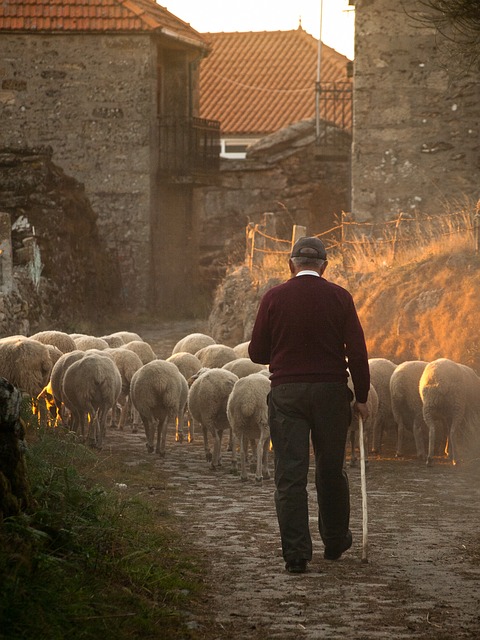
[monetize id=”1″]
Questions and Answers
Please explain why.

There are many pros and cons to the Electoral College. The Electoral College serves a very important function that outweighs the cons. It helps prevent a tyranny of the majority by giving voice to the minority. Nearly 75% of the countries population live in dense urban areas such as New York City, Los Angeles, Chicago, etc. Without the Electoral College, candidates would focus their campaigning on these dense urban areas and the interests of the minority 25% would be ignored.
What the Electoral College does is create the 'swing states'. These are states, like Iowa and Florida, that decide elections. Candidates have to canvas these states from small towns to big cities to win them. The Electoral College is critisized for the swing states with the arguement it disenfrachises other states.
Ask yourself which protects the interests of the minority. Even though unbalanced focus is given to Iowa over, say, Oregon. Who is more likely share a common interest with a rural farmer in Oregon, a rural farmer in Iowa or an urban dweller in Portland?
By creating swing states where candidates have to represent the interests of both the majority urban residents as well as the minority rural residents helps to protect the minority from the tyranny of the majority.
I've read everything I could get my hands on about the Populist Party and I'm still stumped. I just need some pointers. What exactly are they remembered for? I thought they helped get the Bland-Allison Act and the Sherman Silver Purchase Act passed, but it turns out they didn't even do that. Their presidential candidate was not elected, and the 16'th and 17'th amendments to the Constitution were ratified years after the Populist Party fell apart. So what exactly did they do, other than fail epically?

Rural discontent had brewed in the United States since the sharp decline of farm prices in the 1870s. Popular opinion tended to place the blame for the depressed economy on Eastern financial interests. The Greenback Party emerged as a force in national politics, leading the agitation for the currency's expansion. The temporary return of prosperity blunted the Greenback message, but the return of hard times in the 1880s led to emergence of the farmers' alliances.
In December 1890, representatives from a number of the alliances met in Ocala, Florida to examine the issue of united political action. This initial foray into direct involvement came to nothing; allegiances to the Democratic Party still remained strong. Racism, as well as loyalty, played a role; some feared that splitting the Democratic vote would revive the old Republican-black alliance.
Two events in 1890 paved the way for a new political party. First, Congress passed the Sherman Silver Purchase Act, a totally inadequate gesture toward currency expansion. Second, Republicans in Congress chose to withhold support from a bill to enforce civil rights in the South, thus ending any hope for cooperation between the former slaves and the party of Lincoln. Into this void moved figures like Tom Watson of Georgia, who urged Southern white farmers to overcome their antipathy toward blacks because both groups were suffering at the hands of the same oppressors.
ALSO
The Populist effort was probably doomed from the start. They advanced a number of stellar ideas, but fell prey to the allure of free silver, an issue that resonated poorly with urban workers whose votes were badly needed. Discontented farmers, despite their enthusiasm, simply lacked the numbers to move the nation.
See Http://www.u-s-history.com/pages/h876.ht… from which the above are extracts.
1.
What did ALL urban civilizations in the Americas have in common?
(5.0 points)
A) No American civilization developed a system of writing.
B) Even though they lived in cities, the majority of people still worked as farmers.
C) All American civilizations were found entirely in North and Central America, with only small tribal groups in South America.
D) No actual cities were created in the Americas.

Answer is B
A) Almost all the advanced civilizations used writing, from the Olmecs, Teotihuacan, the Mayans, Toltecs, the Aztecs, Mixtecs, Zapotecs, etc. And it depends on how you want to define "writing", because Indian nations in the United States used their own symbols and glyphs to represent ideas, such as the Navajo and the Lakota Sioux who painted symbols on blankets and pottery.
BUT THE MAYANS DEVELOPED THE MOST ADVANCED WRITING SYSTEM. It was phonetic and they could write anything they spoke.
B) This has been true for a long time. In more recent times, the Aztec capital of Tenochtitlan was a "floating city" where farms were built over a lake, with canals for boats and sidewalks for foot traffic.
C) Indian civilizations go all the way up to Canada, where you have the Moundbuilders, and throughout the United States with the Mississippian civilization (such as Cahokia) who built dirt pyramids that resemble the ones found in Mexico. The Mississippian pyramids can be found all the way from Wisconsin (Aztatlan) to the East Coast (Newark) and Florida/Georgia (Ocmulgee).
In the US Southwest, there was the Anasazi civilization that built the Pueblo Bonito massive complex, and cliffdweller buildings.
Indian civilizations go all the way into South America, with the Moche, the Inca, the Nazca, and even many unearthed pyramids that have been found in Bolivia and along the Amazon river in Brazil.
D) The first cities known were in Peru (Huapanga 3200 B.C.) according to new research. Read the new book called "Before Columbus" by Charles C Mann, a science writer for Atlantc Monthly magazine.
Http://www.charlesmann.org/Book-index.ht…
[monetize id=”2″]
